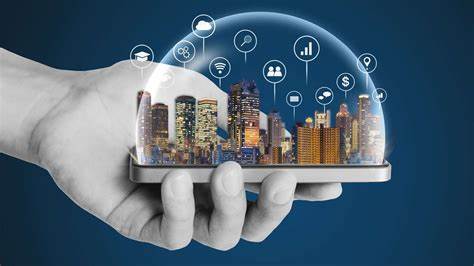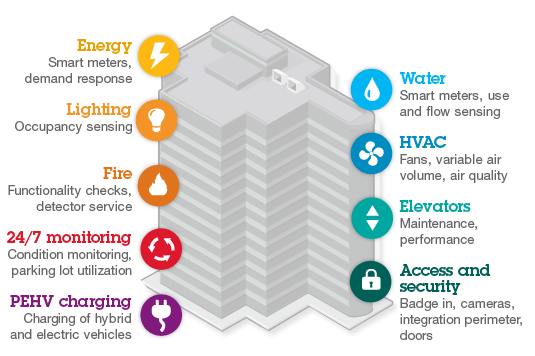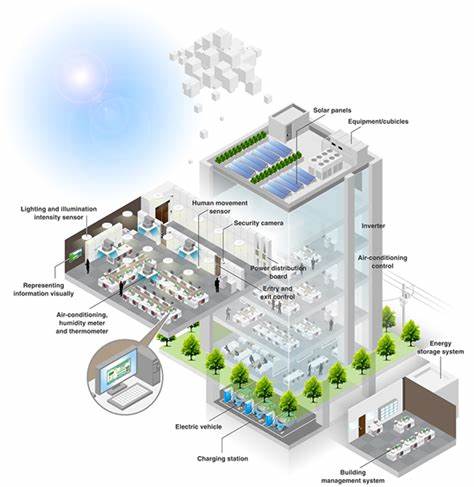
Introduction
Smart buildings have emerged as a significant concept in the modern world, revolutionizing the way we interact with our built environment. These intelligent structures are designed to optimize energy efficiency, enhance occupant comfort, and streamline operations. Studying the economics of smart buildings is crucial to understanding the financial implications and benefits associated with this innovative technology. This article delves into the historical background, key concepts, and current trends of smart buildings while also addressing the potential challenges and controversies in adopting this technology.
Historical Background
The development and evolution of smart buildings can be traced back several decades ago. The concept originated in the early 1970s when computer control systems were first integrated into buildings to monitor and manage energy consumption. Over time, advancements in technology and the increasing need for sustainable solutions led to significant breakthroughs in the field of smart building technology. These milestones included the integration of Internet of Things (IoT) devices, sophisticated sensors, and data analytics platforms that enhanced the functionality and efficiency of smart buildings. The economic aspects of smart buildings have also evolved, with a focus on cost savings, energy efficiency, and return on investment.
Key Concepts and Definitions
Smart buildings are characterized by their ability to intelligently monitor, control, and automate various building systems, including lighting, HVAC, security, and more. Energy efficiency is a core feature of smart buildings, enabling significant cost savings and reduced environmental impact. Key terms and concepts related to the economics of smart buildings include energy efficiency, cost savings, and ROI. Energy efficiency refers to the ability of a smart building to optimize energy consumption and minimize waste. Cost savings are achieved through reduced energy bills and improved operational efficiency. ROI measures the financial return on investment for implementing smart building technologies, considering both upfront costs and long-term financial implications. It is crucial to weigh the economic benefits against potential drawbacks when considering smart buildings.

Main Discussion Points
Economic Benefits of Smart Buildings
Smart buildings contribute to cost savings by implementing energy efficiency measures such as occupancy sensors and smart thermostats. These technologies ensure optimal energy consumption, reducing utility bills.
Operational efficiency and productivity are enhanced in smart buildings through automation and real-time data analysis. Centralized control systems streamline operations, leading to improved productivity and resource utilization.
Smart buildings have a positive impact on occupant comfort and well-being. Features such as personalized lighting, temperature control, and air quality monitoring create a comfortable and healthy environment, resulting in increased productivity and employee satisfaction.
Investment and Financial Considerations
Implementing smart building technologies involves upfront costs, including the installation of sensors, control systems, and data analytics platforms. However, long-term financial implications must also be considered, such as reduced energy expenses and maintenance costs.
Various financing options and incentives are available to support smart building projects. Governments and organizations provide grants, tax incentives, and low-interest loans to encourage the adoption of energy-efficient technologies.
Assessing the potential ROI of smart building investments is crucial for decision-making. The financial benefits, including energy savings and increased property value, need to be weighed against initial costs and ongoing maintenance expenses.
Lifecycle Cost Analysis
Conducting a lifecycle cost analysis is essential for smart building projects. This analysis evaluates the economic viability of smart building technologies throughout their entire lifecycle, from installation to maintenance and replacement.
By considering the total cost of ownership, including energy savings and maintenance expenses, decision-makers can make informed choices about the economic benefits of smart building technologies.
Adopting a lifecycle cost analysis approach can lead to substantial cost savings and benefits in the long run. It provides a comprehensive understanding of the economic impact of smart building investments and facilitates informed decision-making.

Case Studies or Examples
Real-world examples of successful smart building projects highlight the economic impact of this technology. One such example is the Edge building in Amsterdam, which achieved a 70% reduction in energy consumption compared to traditional buildings. This resulted in significant cost savings and increased overall operational efficiency. Analyzing specific case studies sheds light on the financial benefits and challenges associated with implementing smart building technologies in different contexts.
Current Trends or Developments
The field of smart building technology continuously evolves, driven by advancements in IoT, AI, and data analytics. Recent trends include the integration of machine learning algorithms for predictive maintenance, the use of blockchain technology for secure data sharing, and the development of smart grids for optimized energy management. These trends have significant economic implications, including improved energy efficiency, reduced costs, and enhanced sustainability.
Challenges or Controversies
Adopting smart building technologies can present certain challenges from an economic perspective. Common barriers include high upfront costs, the complexity of integrating various building systems, and the need for specialized expertise. Additionally, differing viewpoints and controversies surround the economics of smart buildings, with some questioning the long-term financial viability and ROI of these investments. It is essential to address these challenges and controversies to facilitate informed decision-making.

Future Outlook
The future of smart buildings holds promising advancements in both technology and economic implications. Technological advancements, such as the integration of AI, 5G connectivity, and advanced sensor technologies, will further enhance the efficiency and economic benefits of smart buildings. Changing market dynamics and increasing environmental awareness will drive the demand for sustainable and energy-efficient buildings. This presents opportunities for innovation and growth in the smart building industry, transforming the way we construct and interact with buildings.
Conclusion
Understanding the economics of smart buildings is crucial for stakeholders in the construction, real estate, and sustainability sectors. This article explored the historical background, key concepts, and current trends of smart buildings, highlighting their economic implications. The economic benefits of smart buildings include cost savings, improved operational efficiency, and enhanced occupant comfort. Analyzing investment and financial considerations, as well as conducting lifecycle cost analysis, provides valuable insights into the economic viability of smart building projects. Despite challenges and controversies, the future outlook for smart buildings is promising, with advancements in technology and market dynamics driving innovation and growth in the industry.




